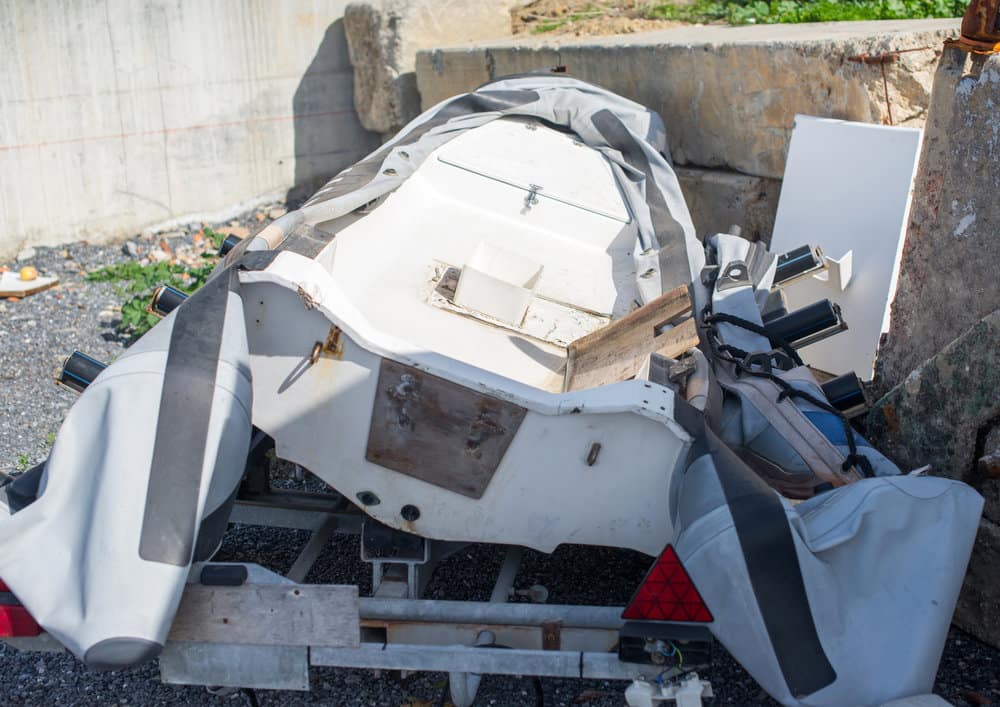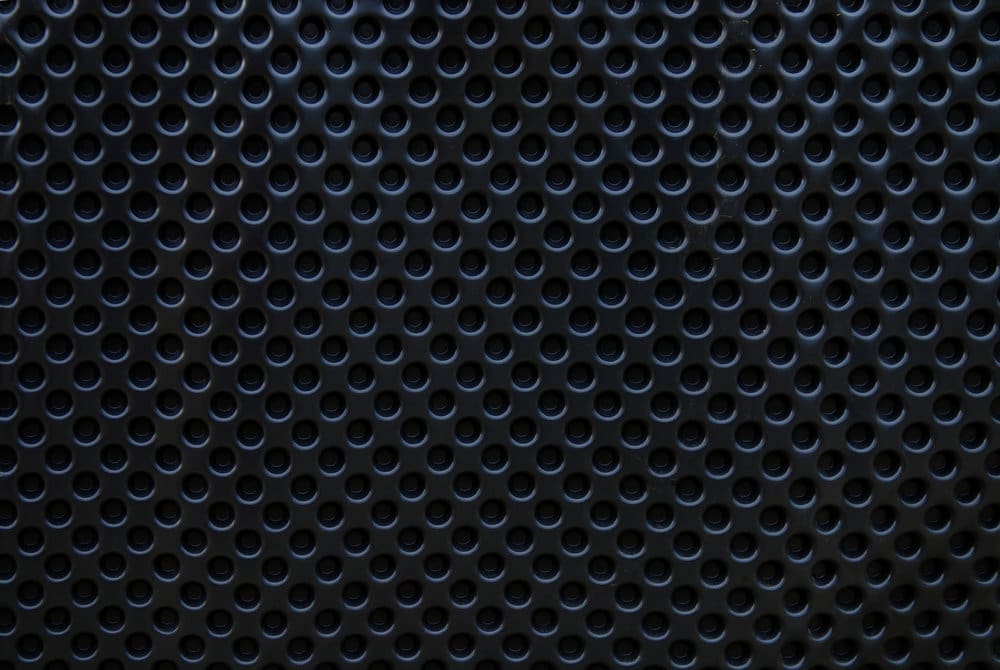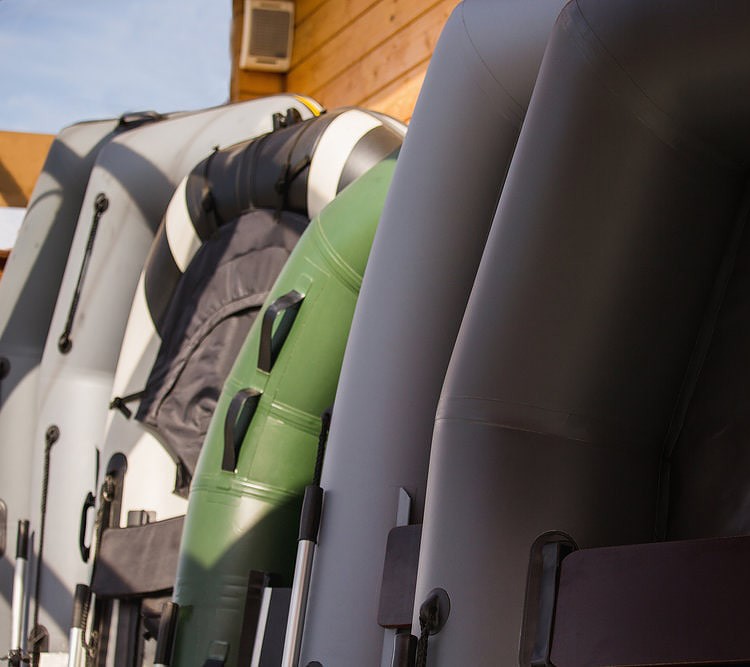“What are the best inflatables made of?”
If you’re buying an inflatable boat, this is one of the first questions that’ll pop up.
We’ve all heard of PVC and Hypalon – but did you know there’s more?
Today, we’re taking a look at:
- ALL the best materials used for inflatable boats (not just your usual PVC vs Hypalon)
- The pros and cons of each one
- Which one YOU should choose
I’ll also throw in a comparison chart at the end so you can easily see which one suits you best.
Ready?
Let’s go.
Table of Contents
What are Inflatable Boats Made Of? – The 5 Best Materials
You can put every inflatable boat material into two categories:
Rubbers and plastics.
But the difference doesn’t stop there.
There are a bunch of rubber and plastic types.
Let’s have a look at each one.
1. Hypalon (CSM)
Chlorosulfunated polyethylene with polychloroprene, commonly known as “Hypalon”, is the best rubber for inflatable boats.
You’ve surely heard people swearing by Hypalon. Some even call PVC “useless” compared to it.
While that’s not exactly true, Hypalon does trump PVC in a lot of areas.
It’s stronger, more UV-resistant, better with abrasion, handles chemicals well, and won’t budge in extreme temperatures.
Check out this video to see how much stronger Hypalon is:
Yes, it is more expensive than PVC.
But for serious boaters, Hypalon is worth its price tag.
| Pros | Cons |
| Best rubber material | Expensive |
| Super strong and doesn’t deteriorate easily | |
| UV, abrasion, chemical, and temperature resistant |
Note: Hypalon and Pennel Orca are the same thing. As is any boat made with CSM, CSPE, or CPE.
2. PVC
The most common type of inflatable material is PVC.
You’ll find PVC (polyvinyl chloride) all over the place – from cheap boats like the Fish Hunter 360
to mid-range fishing boats like the Mariner 4
to professional boats such as those made by ALEKO.
What’s so great about PVC anyway?
Well, PVC is not only strong and water-resistant material – it’s also lightweight and cheap.
It’s these two features that make PVC so popular.
Sure, it’s not as strong as Hypalon. It’s not as good as resisting UV rays or chemicals. It doesn’t last nearly as long as Hypalon does.
But unless you’re going to abuse your boat, PVC will be enough.
With its price tag, you can see why so many people prefer PVC.
| Pros | Cons |
| Lightweight and affordable | Not as strong or long-lasting as Hypalon |
| Can get quite strong (ex: 2,000-denier PVC) | |
| More color options |
3. Vinyl
A LOT of people (myself included) mix up PVC and vinyl.
Wait… Aren’t they the same thing?
Nope!
What’s the difference between PVC and vinyl then?
PVC is a vinyl that has gone through polymerization.
I won’t get what that process is (it’s quite complicated), but after polymerization, the fabric comes out:
- Stronger
- Easier to work with
- More resistant to biological and chemical breakdowns
It’s fair to say then that PVC is a better version of vinyl.
So what can you expect from a vinyl boat?
Not a lot.
If you’re only going on calm waters, you shouldn’t run into any problems. Plus, these boats (such as the Seahawk 4) are extra-cheap.
- Intex Motor Mount Kit
- Part Number: 68351E
Last update on 2025-06-27 at 01:27 / Affiliate links / Images from Amazon Product Advertising API
In terms of strength though, vinyl is one of the weakest materials around.
| Pros | Cons |
| Super cheap | Weakest material |
| Super lightweight | |
| Handles calm water well |
Note: Always remember some people mix PVC and vinyl. Some boats say they’re made from vinyl when they actually use PVC (and vice versa). Make sure to check for yourself.
4. Urethane
Urethane (or polyurethane) inflatable boats are the new boys in town.
For the longest time, no one cared about urethane.
This material was too hard – and only got harder when placed under the sun.
Recently though, this material has risen to the top of the inflatable boat world.
With new technology, manufacturers took this hard and unusable material – and transformed it into the toughest inflatable boat material.
It’s tougher than vinyl, PVC, and yes, even Hypalon!
You won’t find a stronger material for your boat than this today.
You also won’t find another material as expensive.
The biggest problem with urethane is its price. If you thought Hypalon was expensive, wait until you see Urethane’s cost.
Because of this, it’s difficult to find urethane boats for sale online.
| Pros | Cons |
| Strongest inflatable boat material | Most expensive |
| Extremely puncture and abrasion-resistant | Difficult to buy online |
| Most environmentally-friendly |
5. Neoprene (CR)
The first inflatable boats in history were made with Neoprene (or polychloroprene) rubber.
It’s the same material you find in wetsuits.
Manufacturers would take cotton, coat it with Neoprene, then fill it up with air.
This worked – but needed some serious upgrades.
The cotton would rot away fast, leaving only the Neoprene behind. Now, Neoprene can hold on to air (it’s one of the best materials at this). But with the cotton gone, it couldn’t stand alone.

Without support, inflatable boats won’t last.
To deal with this, manufacturers started using chlorosulfonated polyethylene instead of cotton. And that’s exactly how Hypalon was born.
Nowadays, Neoprene/cotton boats are almost nowhere to be found.
It’s nice to know how inflatable boats all started though.
| Pros | Cons |
| First material used | Very few boats use this nowadays |
| Great at keeping the air in | |
| Gave birth to Hypalon |
What is the Best Material for Inflatable Boats?
So what will it be?
Vinyl or PVC?
Hypalon or Urethane?
Can’t decide?
Here’s a helpful chart for you:
| Material: | Life-span: | Price: | UV, Abrasion, & Chemical Resistance: | Weight: |
| Hypalon | #2 | #3 | #2 | #3 |
| PVC | #3 | #2 | #3 | #2 |
| Vinyl | #4 | #1 | #4 | #1 |
| Urethane | #1 | #4 | #1 | #4 |
| Neoprene | N/A | N/A | N/A | N/A |
Looking at that chart, you’ll realize how evenly matched all these materials are.
You’ll realize that vinyl and urethane are two extremes, while PVC and Hypalon are the most complete (no wonder they’re the most popular).
How to Tell Inflatable Materials Apart
Let’s say you found some old inflatable boat – or let’s say someone gave you their boat – how do you tell what it’s made of?
If you can’t find the manufacturer and model of the boat, you can at least tell if it’s plastic or rubber.
This is all you need to know to patch up the boat properly.
The easiest way to do this is to feel the material. Rubber materials are more smooth, while plastics are a bit rougher.

Feel for that rubbery texture
Can’t feel the difference?
Try checking inside the valve.
If the material on the inside is dark gray, it’s most likely rubber. If it’s the same color as the outside, it’s probably a plastic material.
Conclusion
Knowing the differences between inflatable materials is important.
Choose the wrong material, you could find yourself in a lot of trouble. Or, you could find that you spent hundreds of dollars on something you don’t need.
But now that you know what inflatable boats are made of, you’ll never have to worry about getting the wrong material ever again.
Have a question? Send me a comment below and I’ll get right back to you.

I created this site to help people – to help you – with your boat problems. Instead of helping one person at a time, I want this website to be the “one-stop-shop” for everyone’s boating concerns. Read more.






sergio
Friday 29th of September 2023
Esteban, where can I buy in Miami or Florida the complete pvc for my 340 rib 11'2″ that I bought but the pvc rubber around it is rotten. Thank you for your help, Sergio Reinosa.
sergio
Friday 29th of September 2023
esteban ,donde puedo comprar en miami o florida el pevc completo para mi 340 rib 11'2" que compre pero la goma de pvc alrededor esta podrida .gracias por tu ayuda sergio reinosa
Martin Watson
Sunday 28th of March 2021
Can either Vinyl or Hypalon be stitched to form a seam (using kevlar thread through the glue line) and what is the difference between the PVC used for inflatible boats and say 350~550gsm truck siding PVC? I want to build a prototype folding boat that uses 4mm light ply for the frame work but is covered completely in a PVC (or Hypalon) joined along the hinge lines to create a completely waterproof exterior. I am looking into the possibility of hiring a PVC ultrasonic welder if necessary to create the joins, but that depends on the cost and whether the join will be any stronger or weaker than stitch and gluing the joins, especially using Kevlar thread.